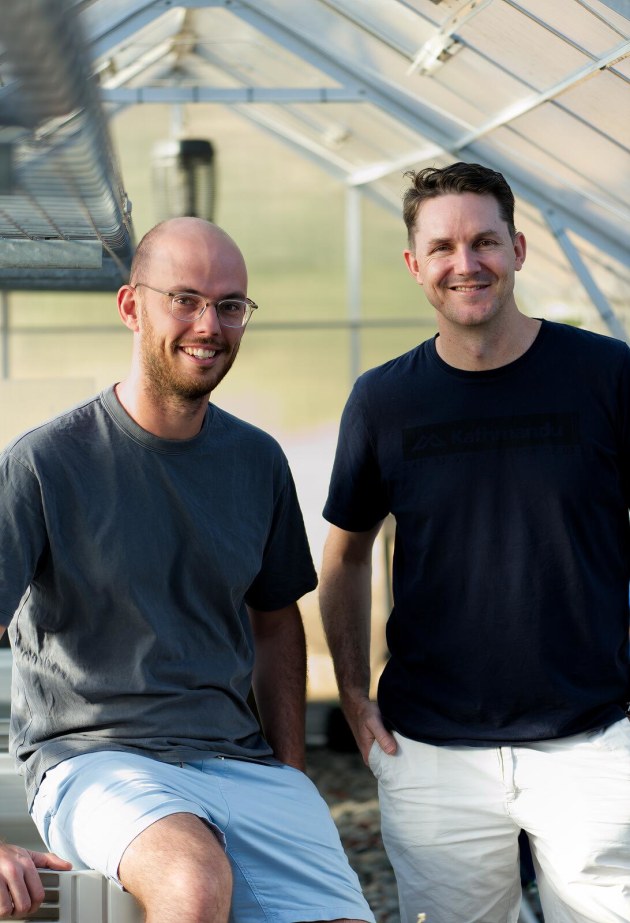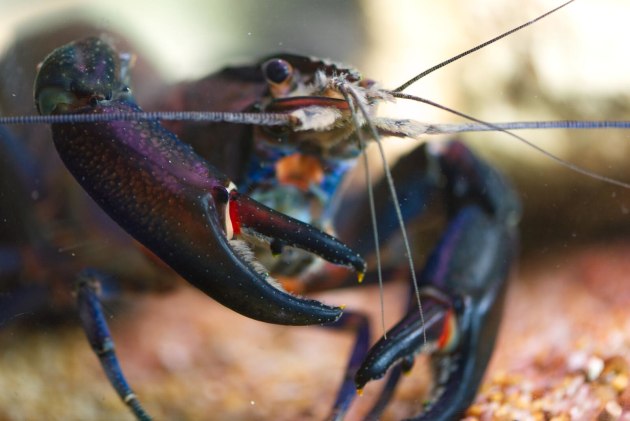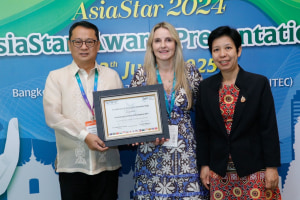Aquatic AI founders Michael Storey and Andrew Walker say the freshwater crayfish marron has the potential to rival Western Australia’s rock lobster industry. Pippa Haupt speaks to the pair about their mission.
Aquatic AI was born when university friends Michael Storey and Andrew Walker read an emerging industries report by AgriFutures. The pair had studied mechanical engineering together but gone into different fields. Storey ran a food delivery logistics start-up for eight years, while Walker was working with robotics and automation in the mining industry.

Even though neither of them had worked in agriculture, both were searching for a new project within the sector that would allow them to apply the skills and knowledge they had developed. Cue the AgriFutures report and Storey and Walker discovering the untapped potential of the freshwater crayfish, marron.
There was one major hurdle – the traditional farming method was not easily scalable.
“The reason we landed on marron was because it was an industry limited by space, labour, and all of the sorts of things you might think AgTech could solve,” says Walker.
An issue of space
Marron are usually stocked at two to four crustaceans per square meter of pond. Usually sold at 200 grams, it becomes apparent very quickly how much pond space is needed to effectively scale up.
Walker says there is a mindset in food and agriculture sectors where companies take what they’re already doing and find technology specialists who can automate the operations. But that wasn’t an option for marron farming.
Storey says they explored whether they could just throw more resources at the current industry, but kept coming back to ‘no’.
“Commercially, it doesn’t make sense to continuously go to an investor and ask for more land to keep growing marron,” he says.
The pair started thinking outside the pond; what about building up, rather than out. The idea matured into a goal to build a market for marron that would rival the half a billion dollar western rock lobster industry, using vertical farming.
“So what would that need to look like? We imagined a system that could scale up to 5000, 10,000, or however many tonnes needed to be produced. Then we worked backwards to see what technology we would need in order to do that,” says Walker.
Walker and Storey designed that system and moved onto the next step: could they actually grow marron in it?
Funding boost
In 2021, AgriFutures Emerging Industries Program awarded Aquatic AI $400,000 to develop a proof of concept for technology-enabled marron farming, with a substantial portion used to engage a team of scientists from the University of Western Australia (UWA).
Aquatic AI commenced lab work based at UWA’s Shenton Field Station under a facility agreement. Shenton Field Station hosts one of Australia’s largest recirculating aquaculture facilities, with a total volume of three million litres.
Since then, Walker and Storey have proven they can successfully produce marron to export size. They are running 100+ marron per square metre in the laboratory, monitoring health and growth, working with a team of biologists, freshwater ecologists, and microbiologists, to develop nutritional strategies to achieve superior growth rates in the automated system.
From lab to life
The goal is now to bring the system to life outside the lab.
“The most exciting thing for us is seeing that we can grow happy marron in the systems that we know we’re going be able to automate, and that the growth we’re getting is close to viable. We’ve seen marron growing two to three times faster than other marron.
“With a good breeding plan, our growth rates would be superior, and with our high survival rates, there’s more chance of bigger, faster growth. We know that we’ve got a path to get better and better all the way through,” Walker says.
Ultimately, the duo want marron to become a globally recognised, iconic Australian food.
As they start seeking more capital the pair are aware of obstacles, including marron’s under-the-radar reputation, and that they are introducing a new primary production method.
“Some investors don’t know what a marron is – it’s just not a well-known species,” says Storey.
Walker says, “We have to generate enough interest and show the right people that this method works and is very scalable. For us, it’s the biggest, best, and most delicious freshwater crayfish out there.
“In global markets there are about 100,000 tonnes per year of freshwater crayfish; we don’t really see there being any particular reason why marron can’t scale up to being in the thousands of tonnes and mostly exported. At the moment there’s virtually no export, and the little bit that exists is not enough to establish and support those markets.”
Looking to the future, Storey and Walker say they won’t stop at marron.
“We intentionally called the company Aquatic AI because we see a lot of other species getting benefit from applying this kind of technology and methodology,” says Storey.
For now, the method is working, getting the word out is next.
This story first appeared as the Blue Sky feature in the April-May 2023 edition of Food & Drink Business magazine.






